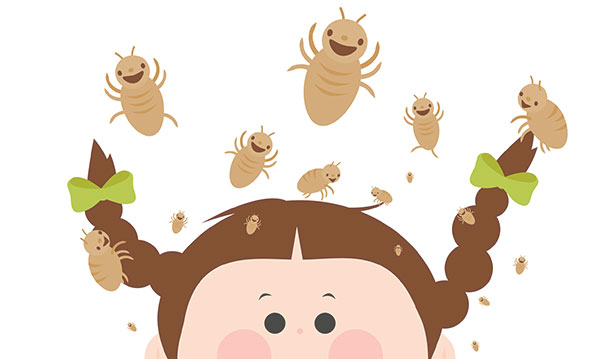
There’s nothing worse than glancing at your child’s head and seeing the tiny, white dots in their hair. Oh, no. It’s head lice! What to do?
First things first, there’s no need to panic. Head lice might be gross, but they aren’t usually serious enough to make children sick.
Here’s everything you need to know about the six-legged insects that stick to your scalp and neck and feast on your blood.
Who gets head lice?
Head lice is most commonly found in children who:
- Go to daycare
- Attend preschool
- Attend elementary school
- Share brushes, hats, etc.
Head lice is also more likely for adults who live with children.
What are the symptoms of head lice?
You can see the critters when they’re there. Head lice can be white, brown or dark gray, and you’ll most likely find them behind the ears or at the back of the neck. Although head lice often don’t cause any symptoms or discomfort for the children who have them, there are a few signs that you or your child has a case:
- Itchy head or scalp – this happens when the bites cause an allergic reaction.
- Red bumps on your head, neck, shoulders or pubic area
- Irritability
- Problems sleeping
- Small, white things in your hair
How do you prevent head lice?
It’s hard to prevent the kind of close contact that leads to head lice in children, but you can certainly try! Here are some things you can do to avoid infestations:
- Don’t share things that touch your head – hair brushes, hats, scarves, towels, helmets, etc.
- Try to make your children stay away from games that involve head-to-head contact with other children.
- Keep long hair in a ponytail or braid.
- Teach your children good hygiene.
How do you get rid of head lice?
If you or your child has lice, try the following things to get rid of them:
- Over-the-counter lice treatment (medicated shampoo, cream rinse, lotions, etc.)
- Prescription medications (ask your doctor)
- Oral medications (if nothing else is working)
It’s important to note that it can take a few days for the itching to stop, even if you’ve killed the lice. Also, if you don’t use the medication correctly, it won’t work, and that includes using too much. In fact, using too much of the medication can cause more harm than good.
After treatment, you should try combing your child’s hair with a fine-toothed comb. If it didn’t work, then your doctor might recommend that you try the same treatment again seven-ten days after the first treatment.
If you or your child has head lice and you don’t know what to do, be sure to consult your doctor or stop by Urgent Care.
